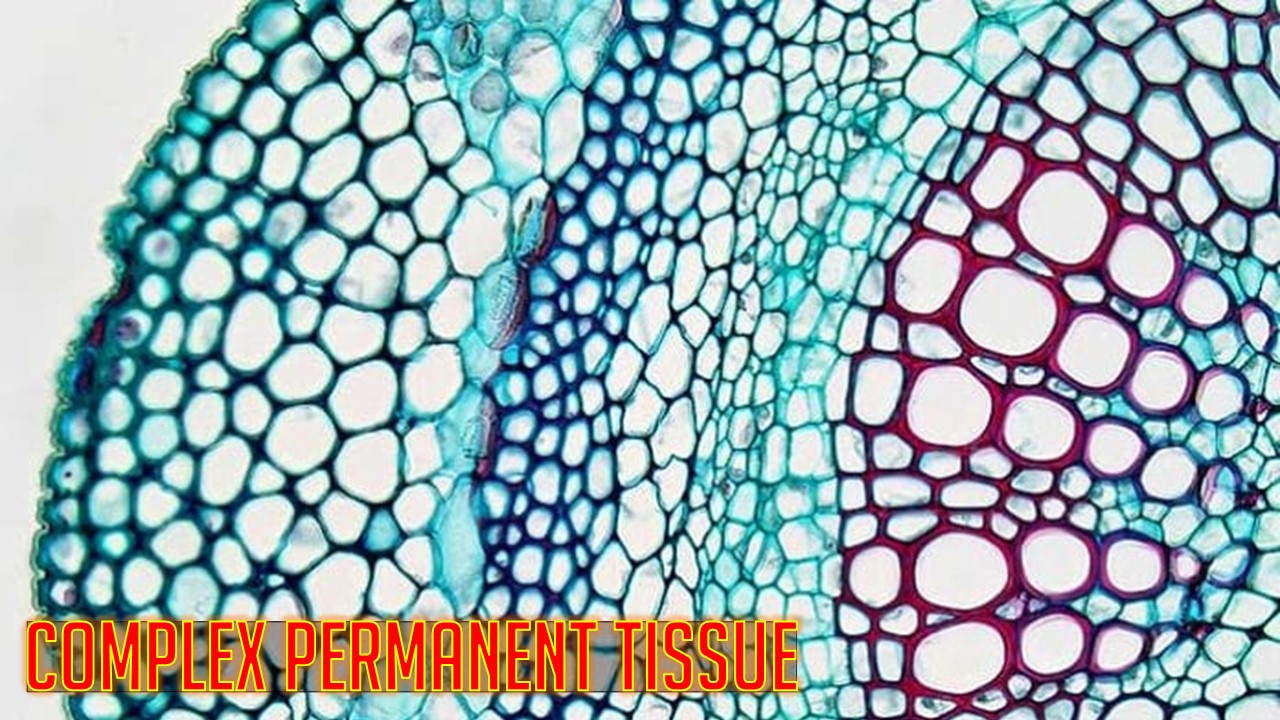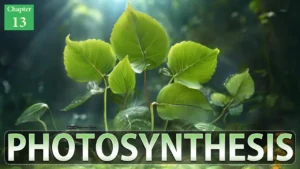Table of Contents
Complex Permanent Tissue Notes
This article we will discuss about Complex Permanent Tissue:- Xylem and phloem
- Complex tissues are made of more than one type of cells and they are heterogenous
- They are also known as vascular tissue or conducting tissue
- Complex tissues are absent in gametophytes
- Complex tissues are of two types:- Xylem and Phloem
Xylem
- The term xylem was introduced by nageli (1858)
- Xylem is conducting tissue which conducts water and mineral nutrients upwards from the root to the leaves
- Xylem besides conduction also provide mechanical strength
- They are composed of four different types of cells
- The elements of xylem are xylem tracheids, xylem vessels, xylem fibres and xylem parenchyma
Elements of xylem
i) Tracheids
- Tracheids are dead and lignified cells
- Tracheids are elongated cell, thick walls with tapering end
- They are placed one above other and all separated by cross walls which bear bordered pits
- The deposition of lignin on cell wall is responsible for formation of different types of thickenings
- Types of thickening in tracheids are annular, spiral, scalariform, reticulate and border pitted
- Tracheids are found in pteridophytes, gymnosperms and xylem of dicotyledons
- Function: Conduct water, dissolved salts and also give mechanical support
ii) Vessels
- Vessels are dead and lignified cells
- Vessels are short cells, pipe like structure and thick walled with wide lumen
- Usually they have simple pits
- The deposition of lignin on cell wall is responsible for formation of different types of thickenings
- Types of thickening in vessels are annular, spiral, reticulate and pitted thickening
- The end walls of vessel elements are called perforation plates
- The perforation may be simple or multiple
- Function: Conduct water, dissolved salts and also give mechanical support
iii) Xylem fibres
- Xylem fibres are dead and lignified cells
- Fibres are long, thick walled and tapering ends
- Lumen is highly reduced
- They are generally not fount in gymnosperm wood
- Function: They give support to vessels and tracheids
iv) Xylem parenchyma
- Xylem parenchyma are living and thin walled cells
- Cell walls are made up of cellulose
- Function: Store food materials and radial conduction of water
Phloem
- The term phloem was introduced by nageli
- Phloem is conducting tissue which conducts food materials from the leaves to other parts of the plants
- First formed phloem is protophloem and later formed phloem is called metaphloem
- They are composed of four different types elements
- The elements of Phloem are sieve elements, companion cells, phloem fibres and phloem parenchyma
Elements of phloem
I) Sieve Elements
- Sieve elements are living cells with protoplasm
- They are food conducting cells
- Nucleus absent in the sieve elements
- Two types of sieve elements are found in the phloem
a) Sieve tubes
- Sieve tube occurs in angiosperms
- They are rows of cells arranged one above other to form long pipes
- In sieve tubes the sieve area is located on end wall called sieve plate
- During unfavourable conditions the cytoplasmic strand is ensheathed by the callose material in the sieve area and transport of food material is stopped
b) Sieve Cells
- Sieve cells occur in phloem of ferns & gymnosperms
- These are primitive type of sieve elements
- Sieve cells are elongated with tapering end
- Sieve pores are present all over sieve cells
II) Companion cells
- Companion cells are living cells associated with the sieve tubes
- They are present only in angiosperms and are absent in pteridophytes & gymnosperms
- Companion cell and sieve tube are the sister cells because both of them originated from same mother cell
- They are contains both nucleus and cytoplasm
- Special type of cells are attached with sieve cells in gymnosperm and pteridophytes in place of companion cells.
- These cells are called Albuminous cells or Strasburger cells
III) Phloem parenchyma
- They are living cells with thin walled
- Phloem parenchyma cells in generally store up food materials and help in conduction of food
- Phloem parenchyma is totally absent in monocot plants
- Two types of parenchyma occurs in phloem
- Axial parenchyma:- Present in primary phloem and they store starch
- Ray parenchyma:- Present in secondary phloem and useful for radial conduction of food materials
IV) Phloem fibres
- This is only the dead component of phloem
- They possess lignified cell wall with pits on their wall
- Phloem fibres are very long, soft and silky in appearance, hence have immense economic importance
- These fibres provide mechanical support to the plants
For more detailed information about plant anatomy, download now full study material as PDF



![[PPT] The living world Class 11 Notes](https://rajusbiology.com/wp-content/uploads/2024/06/PPT-The-living-world-Class-11-Notes-300x169.webp)
